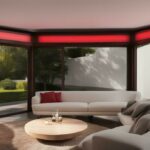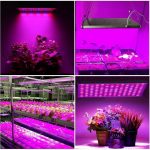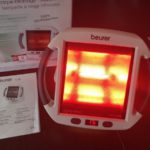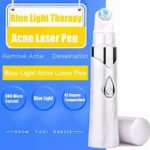Last Updated on 12 months by Francis
In this article, we will discuss the best light therapy options for Seasonal Affective Disorder (SAD). SAD is a type of depression that typically occurs during the winter months when there is less natural light. Light therapy can help alleviate the symptoms of SAD by mimicking natural sunlight and improving mood and energy levels. We will explore various types of light therapy devices and their effectiveness in treating SAD.
Contents
Understanding SAD
Seasonal Affective Disorder (SAD) is a form of depression that occurs during the winter months when the days are shorter, and the nights are longer. SAD can impact anyone, but it is more common in women and people who live further away from the equator. Symptoms of SAD include fatigue, lack of energy, difficulty concentrating, and a general feeling of sadness.
What causes SAD?
The exact cause of SAD is not known, but it is believed to be related to changes in the body’s circadian rhythm due to the lack of sunlight. The circadian rhythm is the body’s internal clock that regulates sleep, hunger, and mood. People with SAD have a disrupted circadian rhythm, which can lead to a variety of negative symptoms.
Misconceptions about SAD
There are several misconceptions about SAD that need to be addressed. One of the most common misconceptions is that SAD is just a case of the “winter blues” and that people should just “snap out of it.” This is not true. SAD is a real medical condition that requires treatment. Another misconception is that SAD only occurs in people who live in cold climates. This is also not true. SAD can occur in anyone, regardless of where they live.
Light Therapy for SAD
Light therapy is a non-invasive treatment that uses bright light to simulate natural sunlight. It is a popular treatment for SAD because it helps to regulate the body’s circadian rhythm and improve mood. Light therapy can be done at home or in a doctor’s office.
Light therapy is an effective non-invasive treatment for Seasonal Affective Disorder (SAD) that uses bright light to simulate natural sunlight. SAD is a real medical condition that requires treatment, and light therapy can help improve the body’s circadian rhythm and regulate mood. When choosing a light therapy device, it’s important to consider factors such as brightness, size, and cost, and to use the device consistently every day at the same time for best results. It’s also important to be aware of potential side effects and to speak to a doctor if any occur.
How does light therapy work?
Light therapy works by exposing the eyes to bright light, which stimulates the brain to produce serotonin, a hormone that regulates mood. Light therapy also helps to regulate the body’s circadian rhythm, which can help to improve sleep.
Types of light therapy
There are several types of light therapy available, including:
- Bright light therapy: This is the most common type of light therapy. It involves sitting in front of a lightbox that emits bright light for a set amount of time each day.
- Dawn simulation: This type of light therapy involves a light that gradually increases in intensity, simulating a sunrise. It is designed to help regulate the body’s circadian rhythm.
- Blue light therapy: This type of light therapy uses blue light to regulate the body’s circadian rhythm. Blue light therapy is often used in conjunction with bright light therapy.
Choosing the right light therapy
When choosing a light therapy device, there are several factors to consider, including:
- Brightness: The lightbox should be bright enough to simulate natural sunlight. Look for a device that emits at least 10,000 lux of light.
- Size: The lightbox should be large enough to provide adequate coverage. Look for a device that is at least 10 inches by 12 inches.
- Cost: Light therapy devices can be expensive. Look for a device that fits your budget and offers a good warranty.
Tips for Using Light Therapy
Timing
The timing of light therapy is important. It is best to do light therapy in the morning, as this can help regulate the body’s circadian rhythm and improve sleep.
Duration
The duration of light therapy will depend on the type of device you are using. Most devices require 30 minutes to 2 hours of use per day.
Consistency
Consistency is key when it comes to light therapy. It is important to use the device every day, at the same time each day, to see the best results.
Side Effects
Light therapy is generally safe, but it can cause side effects in some people. These side effects can include headaches, eye strain, and nausea. If you experience any side effects, it is important to stop using the device and speak to your doctor.
FAQs – Best Light Therapy for Seasonal Affective Disorder (SAD)
What is Seasonal Affective Disorder (SAD)?
Seasonal Affective Disorder (SAD) is a type of depression that typically occurs during the winter months when there is less natural sunlight. The symptoms of SAD can range from mild to severe and may include feelings of sadness, anxiety, irritability, fatigue, and difficulty sleeping.
Can light therapy help with SAD?
Yes, light therapy is an effective treatment for SAD. It involves exposure to artificial light that simulates natural sunlight. By using a light therapy device for a certain amount of time each day, it can regulate circadian rhythms and help to alleviate symptoms of depression associated with SAD.
What type of light therapy is best for SAD?
The most effective type of light therapy for SAD is bright light therapy. This involves using a lightbox that emits light at an intensity of at least 10,000 lux. The light is usually placed at a specific distance from the individual and is angled downwards towards the eyes.
How long does light therapy take to work for SAD?
Most people will start to see a significant improvement in their symptoms within the first two weeks of using light therapy. However, it can take up to four weeks for some individuals to experience the full benefits of the treatment.
How often should I use light therapy for SAD?
The recommended duration and frequency of light therapy sessions vary depending on the individual’s symptoms and the severity of their SAD. Generally, a daily light therapy treatment of 30 minutes to one hour is recommended. Some people may benefit from dividing their light therapy sessions into two or three shorter sessions throughout the day.
Are there any side effects of light therapy for SAD?
Light therapy is generally considered safe and does not have any notable side effects. However, some individuals may experience mild side effects such as headaches, eyestrain, or nausea. These side effects usually resolve on their own and can be minimized by adjusting the distance and duration of the light therapy sessions.

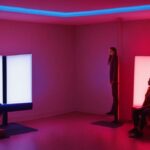
.jpg)
